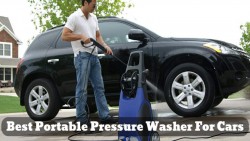What is the best way to let air out of car tires when PSI is too high?
PSI (pressure per square inch) is the minimum amount of air pressure that should be contained in your tires for them to support your vehicle’s load. It may seem normal for you to under or over-inflate your tires, but there is a recommended PSI range for your vehicle's tires.
If you are asking, “what is the best way to let air out of car tires when PSI is too high?” then this article will provide detailed information on this process as well as an explanation of what happens when you over-inflate your tires. In the end, you should know the recommended PSI for your car tires.
Dangers of overinflated tires
Sometimes, over-inflating your car tires seems like the sensible thing to do because you may think it helps its performance. However, it is dangerous to inflate your tires beyond their recommended limit and this section explains all these dangers.
Early wear and tear
Overinflating your car tires makes them vulnerable to external pressures from moving on surfaces. This is because your tires become rigid rather than flexible thus making wear faster as a result of going over bumps, this worsens as you move over rough surfaces. With this wear, You lose traction and proper stability on the road, this can get dangerous if not fixed on time as you may veer off the road. In severe cases, your tires may tear or blow out.
Poor traction
Traction is established when the forces in your tires and the forces on the road surface push against each other to have a strong grip. This process is achieved if all parts of the tires are involved, but with over-inflated tires, the center bulges out and is made the only part of the tire in contact with the road surface.
When only parts of your car tires come in contact with the road surface, then your vehicle begins to lose its traction and becomes insatiable when moving.
Poor fuel mileage
An under-inflated tire reduces the fuel mileage of a vehicle. This pattern has led to the misconception that an over-inflated tire will increase fuel mileage to greater heights. However, over-inflated tires eventually get damaged and this affects the overall performance of your car.
With over-inflated tires, your vehicle loses traction and wears easily. This puts your vehicle under a lot of pressure in an attempt to keep it moving at its best state, all these efforts lead to your car using a lot of fuel.
Bumpy rides
Imagine driving on a smooth road surface but feeling like you’re driving on rocks. An over-inflated tire has a bulge in its center due to excess air, this bulge makes driving rough and doesn’t provide the same experience you usually have while driving.
Regular tires can absorb shocks from rough surfaces and this has a low impact on your experience using your vehicle. However, in its distorted and over-inflated state, your tires lose their ability to properly absorb the impact of even the slightest rough surface. This gives you a rough and bumpy ride.
Damage to other vital parts
The quick wear caused by over-inflated tires leads to damages and problems in other vital parts if not quickly fixed. Some of these problems include damage to the suspension system, clutch, and engine. Letting these damages reach this critical stage will only cost you a lot in terms of repair.
Recommended PSI for car tires

Every vehicle has its recommended PSI for tires and information like this can be found in the car’s manual or on a sticker glued somewhere on the car. Most passenger cars have a PSI that ranges from 32 PSI to 35 PSI. The stickers that indicate the recommended PSI for your car can be found on the car door.
How to check your tire pressure?
You can make a quick trip to the auto store to get experts to check your tire PSI or you can carry out this task on your own using a pressure gauge, air compressor, and a pen and paper for accurate measurement. It is recommended that you measure the PSI when the tires are cold. After driving, the heat generated as a result of friction between your tires and the road surface makes the air inside them expand, and measuring the pressure at this time gives an inaccurate result.
What is the best way to let air out of car tires when PSI is too high?
If you have recognized that your vehicles have over-inflated tires, you can let out some air to prevent any significant damage to your car tires and their overall performance. So, what is the best way to let air out of car tires when PSI is too high? This section explores the steps you can take to deflate your tires to just the right size without any complications.
Tools required
- Pressure gauge
- Screwdriver or a pointed metal object
- Plastic bag or small container
Step one: Allow car tires to cool
As explained earlier, air pressure in your car tires changes with the temperature. If your tires are already cool, skip this step.
Step two: Locate the tire valve
Each tire on your vehicle has a valve about 2 inches long that protrudes from them. The valve has a cap on it, remove this cap to reveal a small pin sticking out from the center of the valve. Always remember to store the cap of each valve in a small container or a plastic bag.
Step three: Test the pressure of the tires

Before testing for the right pressure to deflate your tires to, you should know the correct PSI for them as recommended by your car manufacturers, this process has been covered in the previous section. Carefully screw the pressure gauge into the valve, and take note of the current pressure.
The pressure gauge is calibrated to a PSI measurement; your reading should be measured in the same unit as that of your manufacturer.
Step four: Release air from the valve
A pointed metal object is best suited for carrying out this task and this is because its pointed tip can somewhat align with the valve pin and release air without causing any damage. Some commonly used items for this purpose include a screwdriver or a needle-nose plier. Other items that can be used include a key, a nail, or a ballpoint pen.
By pushing the tip of one of these pointed objects against the valve of the tires, you should hear the sound of air being let out. Monitor the pressure gauge while doing this to ensure that your tires arrive at the right PSI.
Step five: Cover the valve
When the PSI reading on the pressure gauge is the same as the one recommended, then you can stop pushing on the valve. Retrieve the valve cap from where you stored it and put it back on. If you have more than one over-inflated tire, you can repeat this procedure for each of them.
Dangers of under-inflated tires
In the process of deflating your tires, you may go too far and lessen them more. However, it is not okay to move around with under-inflated tires, here are some of the dangers of this circumstance.
Complete tire failure
With a flattened tire, you have more area touching the road surface than is needed, this leads to overheating as a result of friction. Overheating damages your tires and other parts of your car like the clutch and brakes as well.
Low fuel mileage
Under-inflated tires don’t make your car works like it usually does. This means your car requires more power to achieve the bare minimum, leading to more fuel consumption. If you begin to buy fuel more than usual, your tires may be the cause.
The shorter life span of tires
Using an under-inflated tire reduces the thread life by a significant amount. This will cause you to purchase new tires faster than you intend to and this will cost a lot since quality tires are expensive.
Unresponsive steering
An under-inflated tire has low pressure in them and does not provide cushion for the wheels. This leads to greater friction, which can cause your steering wheel to become unresponsive. Along with this, you may also notice a banging sound that indicates that the wheels are hitting the road surface without the right pressure in the tires.
Conclusion
If you have an over-inflated tire, you may be asking, “what is the best way to let the air out of car tires when PSI is too high?” There are several damages that an over-inflated tire can cause and some safety hazards as well, this is why it is important to maintain the recommended air pressure.
This article has explained how to find out the recommended PSI for your car tires, how to measure the pressure, and how to deflate your tires when needed. We have also explained the dangers of driving with under-inflated tires. It can damage your tires and lead to some long-term car damage.



